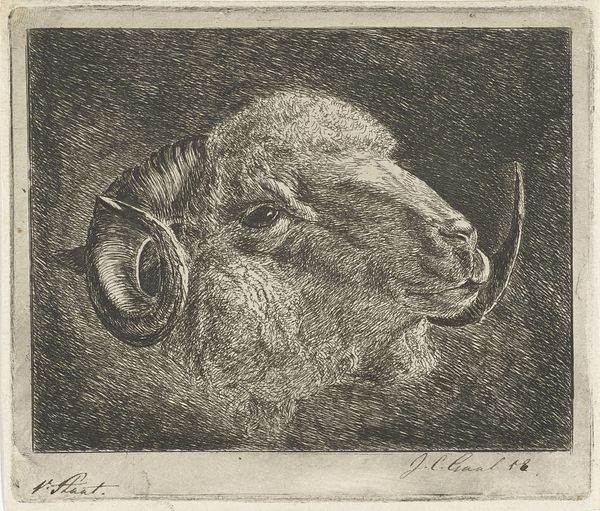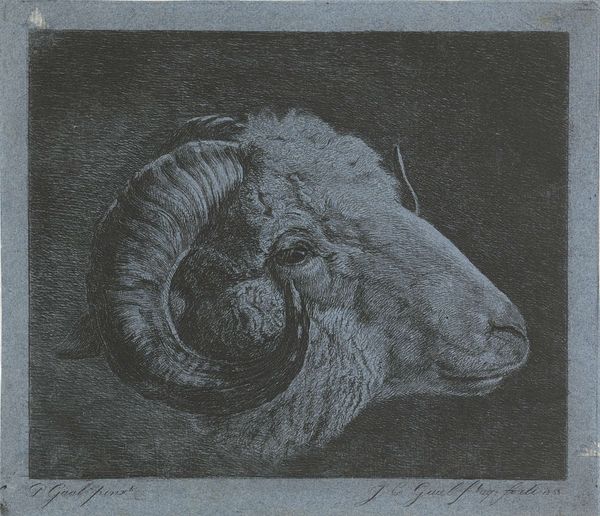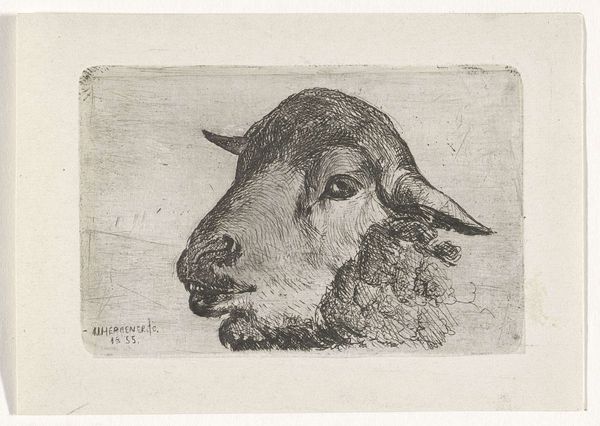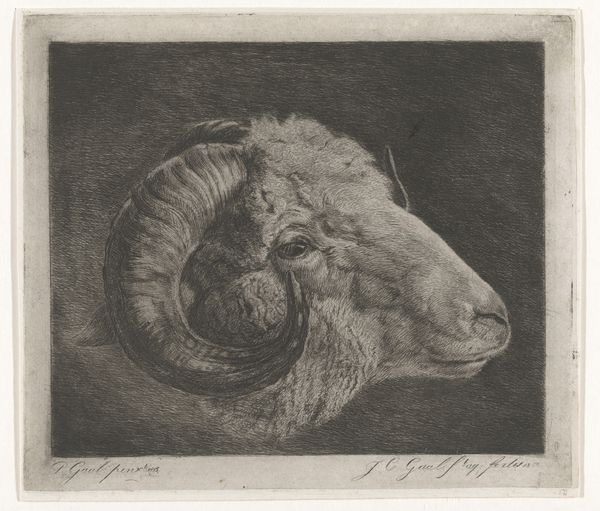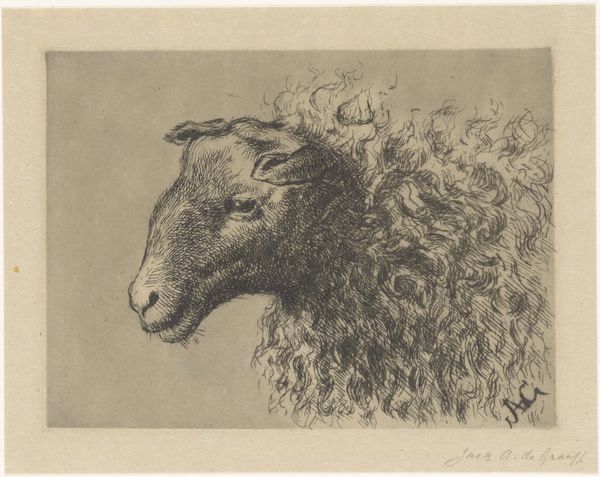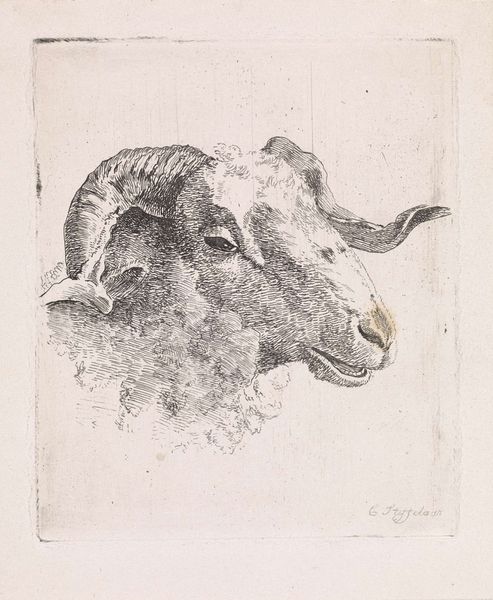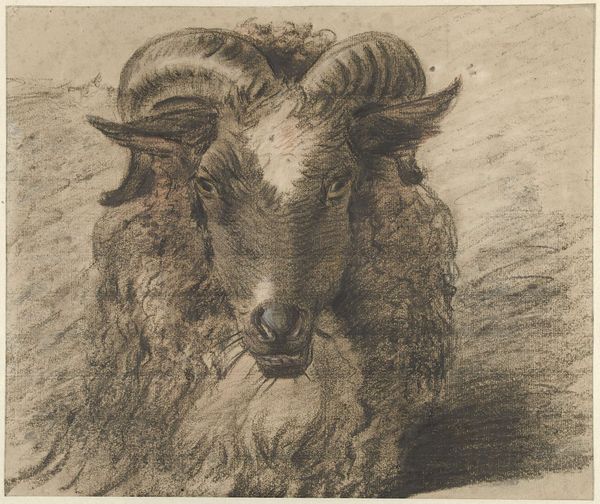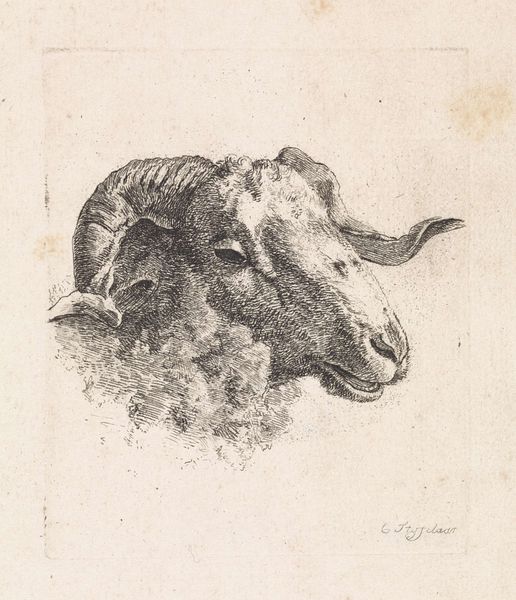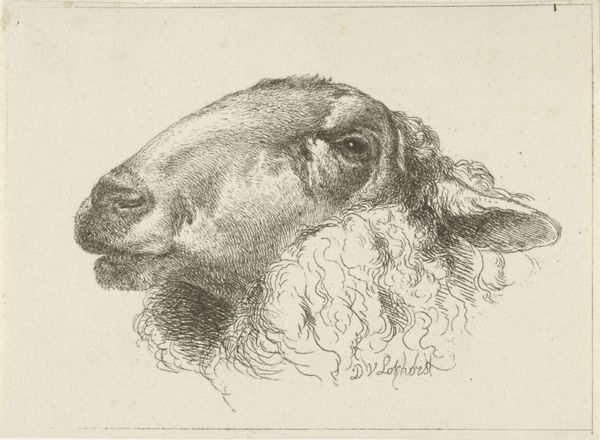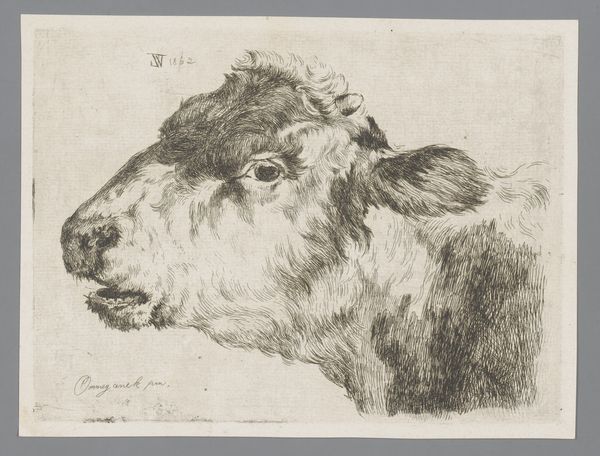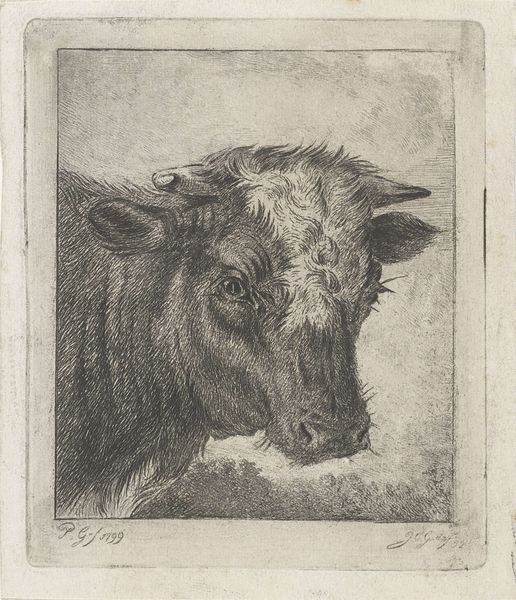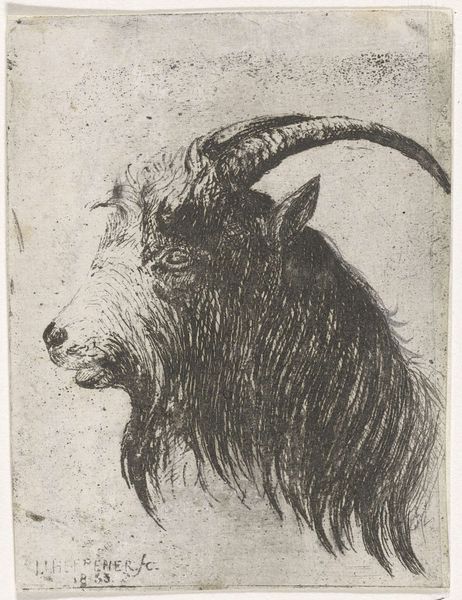
drawing, print, etching
#
portrait
#
pencil drawn
#
drawing
# print
#
etching
#
pencil sketch
#
charcoal drawing
#
charcoal art
#
pencil drawing
#
portrait drawing
#
realism
Dimensions: height 125 mm, width 145 mm
Copyright: Rijks Museum: Open Domain
Jacobus Cornelis Gaal created this etching, "Head of a Ram with backward facing Horns," in 1858. During the 19th century, the Netherlands were undergoing significant social and economic changes, including increased agricultural production. This image of a ram is a direct reflection of this shift. But it's not just a portrait of an animal; it carries layers of meaning. In Western art history, animals have often been used to symbolize human traits. The ram, with its powerful horns, can represent virility, strength, or even aggression. However, Gaal's choice to depict the ram's horns as "backward facing" introduces an element of subversion. What does it mean to depict a symbol of virility facing backwards, against itself? Gaal’s detailed rendering invites us to consider the complexities of power, identity, and representation within the changing landscape of 19th-century Dutch society.
Comments
No comments
Be the first to comment and join the conversation on the ultimate creative platform.
